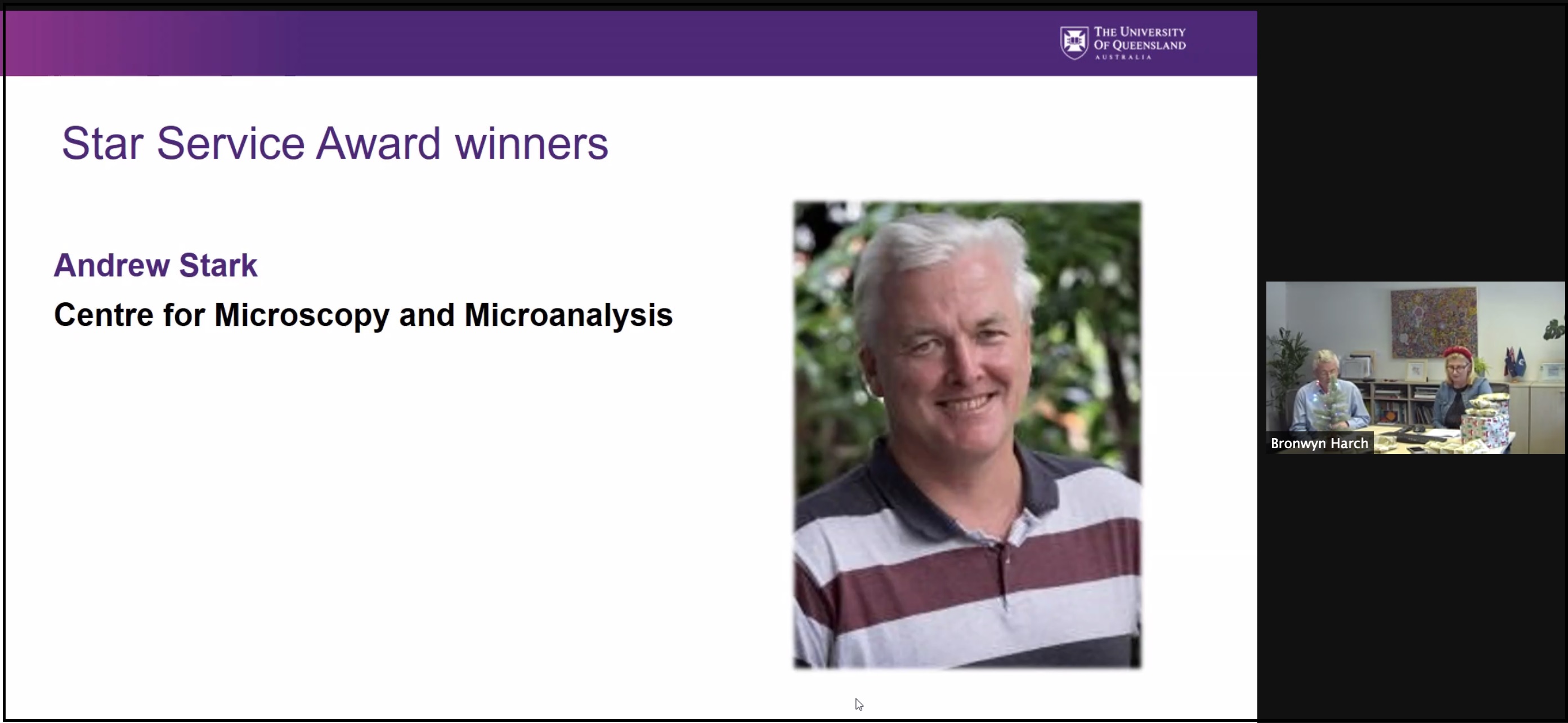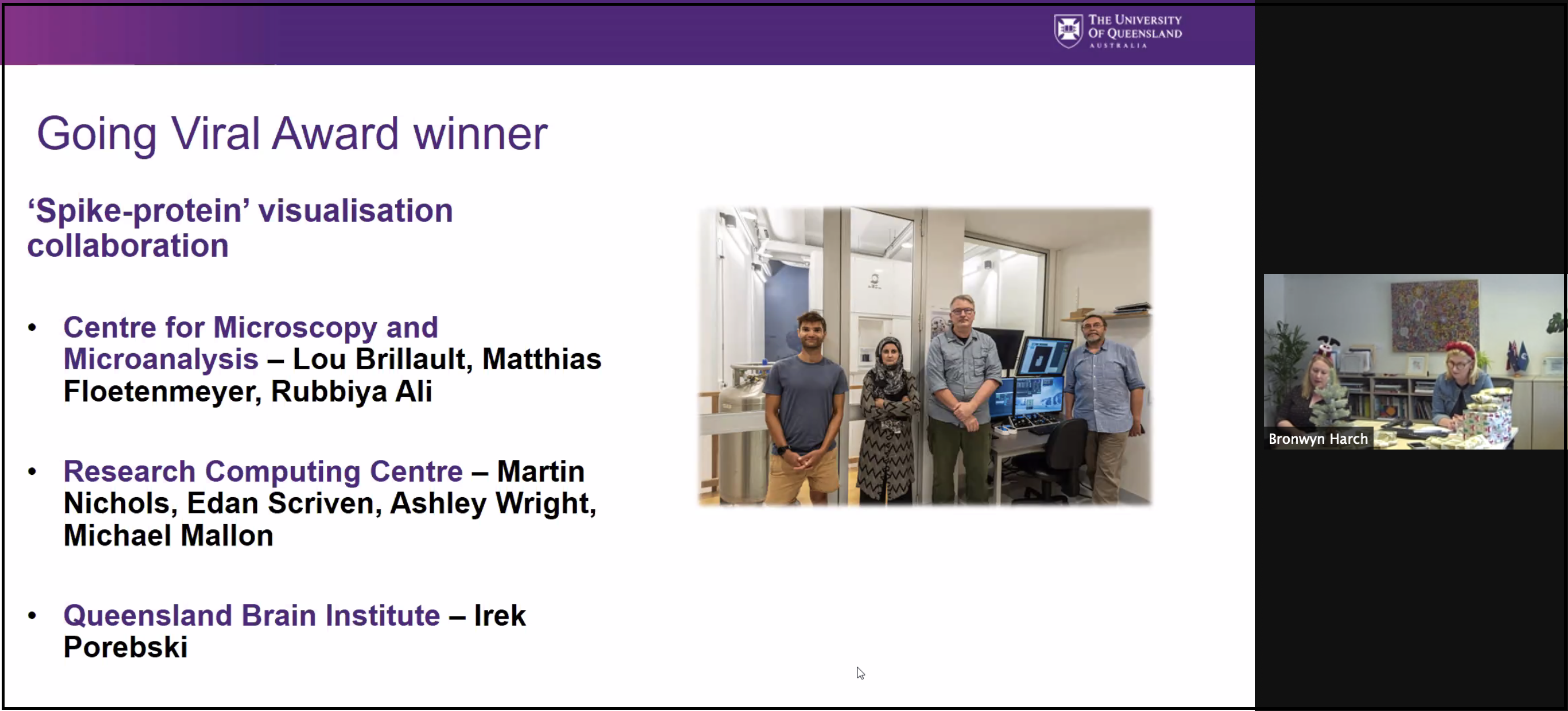2020 Star Service Award Winner!
We are delighted to inform you that Mr Andrew Stark has been awarded the 2020 Star Service Award Winner at the Research and Innovation Portfolio Awards ceremony yesterday.
This prize recognises the exceptional support contribution of Andrew to our central research platform and his breadth of support on technical, mechanical, electrical and IT issues at CMM. His friendly, direct interaction and looking for smart and quick fixes has saved UQ many extra maintenance costs and most importantly helped CMM to deliver a 24/7 platform performance through all the years of his service for researchers at UQ. Most users and clients don't get in touch with Andrew and this Award allows UQ and us to congratulate him for his excellent background support and to make such essential work visible.
Congratulations Andrew!
UQ R&I 2020 Going Viral Award!
We are delighted to inform you that a combined team from RCC, QBI and CMM have been awarded the UQ R&I 2020 Going Viral Award at the awards ceremony yesterday. The CMM team are pictured, left to right, Dr Lou Brillault, Dr Rubbiya Ali, Dr Matthias Floetenmeyer and
Professor Roger Wepf.
This submission recognises the contribution of two research platforms, the Centre for Microscopy and Microanalysis and the Research Computing Centre, which collaboratively provided critical infrastructure and support towards the UQ COVID-19 vaccine.
The platforms provided research infrastructure that allowed the UQ team to “see” the “spike-protein” and the new “clamp” structure, a key component of the SARS-CoV-2 vaccine. Using cryo-electron microscopy, the researchers produced raw images of this protein. A complex software pipeline on RCC’s supercomputer Wiener refined the image to generate a realistic 3d representation. The work also leveraged RCC’s research data infrastructure and university high speed networks.
While electron microscopy, supercomputing and data storage are only a small part of the overall workflow, they are critical to success. Data from cryo electron microscopes is rarely useful in its raw form, and sophisticated supercomputer codes and supporting infrastructure are required to generate useful 3D models.
Congratulations to all involved!





